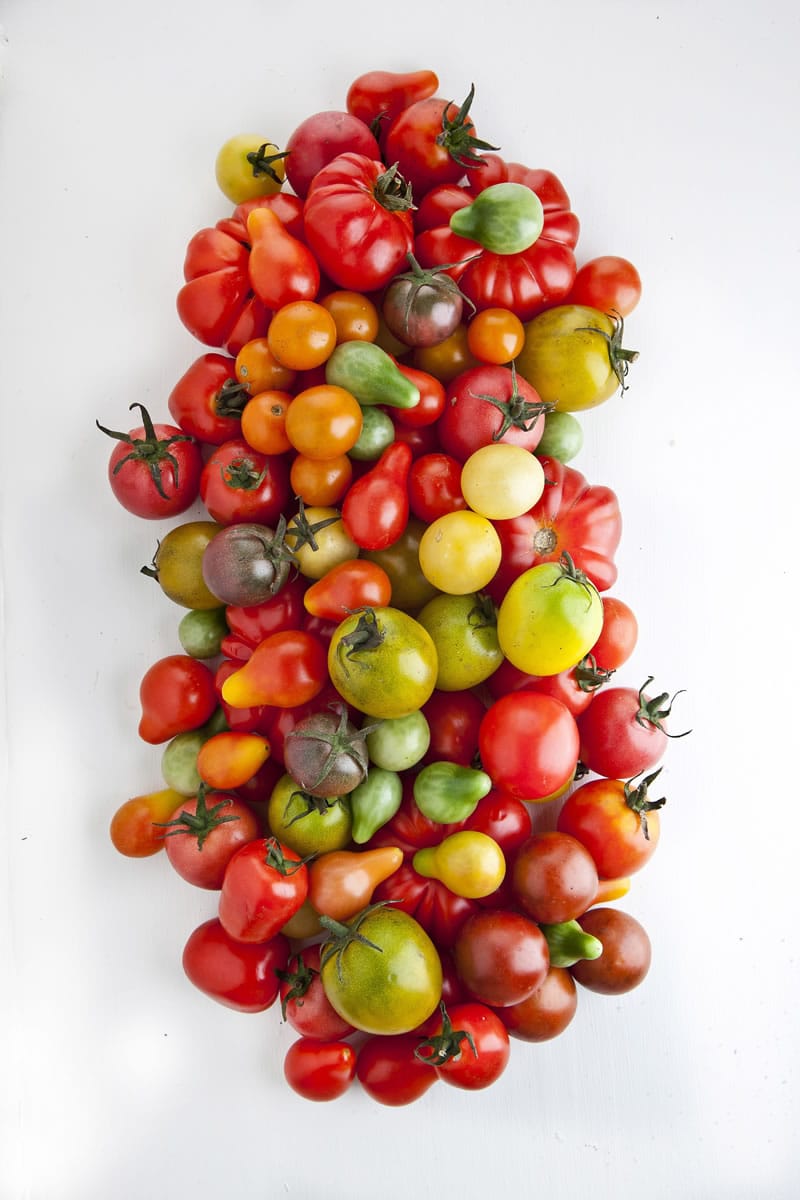Process in a boiling water bath for 45 minutes.
Tomato Sauce — Seasoned
Makes 5 half-pint jars.
From “So Easy to Preserve.”
10 pound tomatoes, peeled, cored and chopped
3 medium onions, finely chopped
3 cloves garlic, minced
1 1/2 teaspoons oregano
2 bay leaves
1 teaspoon salt
1 teaspoon black pepper
1/2 teaspoon crushed red pepper
1 teaspoon sugar
Bottled lemon juice or citric acid to add to each jar of sauce
Place all ingredients in a large saucepan.
Bring to a boil.
Simmer 2 hours, stirring occasionally.
Press mixture through a food mill and discard seeds.
Cook mixture until thick over medium high heat, stirring frequently.
Pour hot sauce into jars, leaving 1/2 inch headspace.
To each 1/2 pint or pint jar add 1 tablespoon bottled lemon juice OR 1/4 teaspoon citric acid.
Wipe rims and adjust lids
Process boiling water bath canner for 35 minutes OR process in pressure canner for 15 minutes. (10 pounds for weighted gauge canner and 11 pound pressure for dial gauge pressure canner.)
Spaghetti Sauce Without Meat
Makes about 9 pints.
From Canning Tomato and Tomato Products, PNW Extension publication.
30 pounds tomatoes
1 cup onions, chopped*
5 cloves garlic, minced
1 cup celery or green pepper, chopped *
1 pound mushrooms, sliced* (optional)
1/4 cup vegetable oil
4 1/2 teaspoons salt or to taste
2 teaspoons black pepper
2 tablespoons oregano
1/4 cup parsley, minced
1/4 cup brown sugar
o It is NOT safe to increase the proportion of onions, peppers/celery or mushrooms
Wash tomatoes and dip in boiling water for 30-60 seconds or until skins split.
Dip in cold water and slip off skins.
Remove cores and quarter tomatoes.
Boil 20 minutes, uncovered, in a large saucepan.
Put though food mill or sieve.
Saute onions, garlic, celery or peppers, and mushrooms (if used) in vegetable oil until tender.



